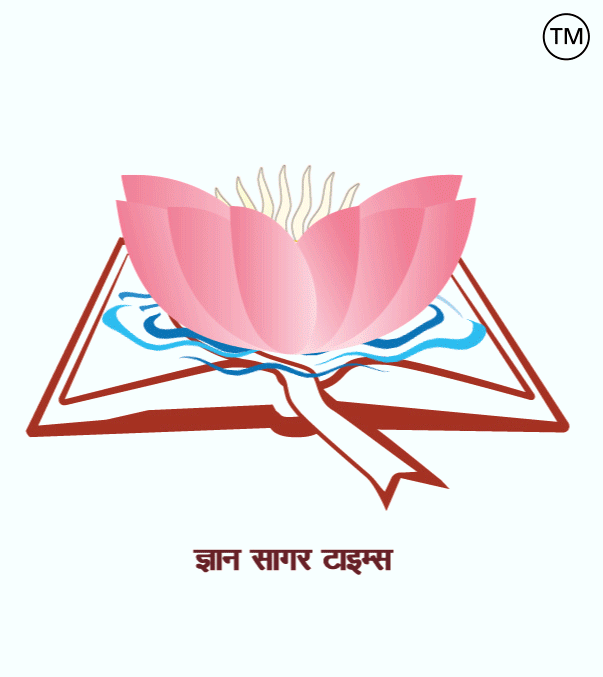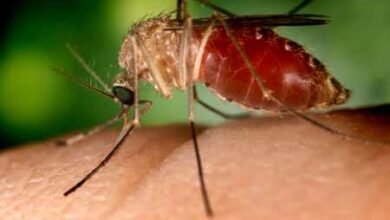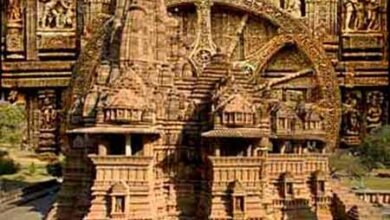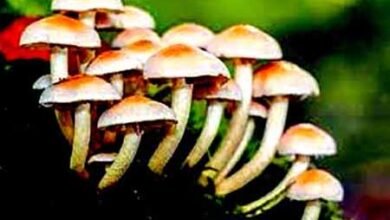
Related to Geography-181.
|
1. Who first used the term ‘Geography’ to describe the Earth? = Eratosthenes. 2. Who authored a book called Metrology? = Aristotle. 3. Who is the author of the famous geographical book Kitab-ul-Hind? = Al-beruni. 4. The instrument used to measure area on maps is called? = Planimeter. 5. Is the Equator? = An imaginary line that divides the Earth into Northern and Southern Hemispheres. 6. What is the equatorial diameter of the Earth? = 12,756 km. 7. How much is the polar diameter of the Earth less than its equatorial diameter? = 43 km. 8. Which scientist was the first to use the term ‘troposphere’? = It was invented by the French meteorologist Leon Teisserenc de Bort. 9. In radio-communication, where are the signals emitted by the transmitting antenna reflected? = Is reflected in the Earth’s ionosphere. 10. Who proposed the theory of plate tectonics? = Harry Hess. 11. What is the lagoon that develops between the coastal coral reef and the site block? = Coral Reef Lagoon. 12. Who has given the Himani control theory related to the origin of coral reefs? = Charles Darwin. 13. What is the solar radiation returned from the Earth? = Terrestrial radiation. 14. What is an instrument used to measure the intensity of the rays of the sun? = Pyranometer, Albedometer, and Pyrheliometer. 15. Which planet is between the Sun and the Earth? = Mercury and Venus are planets. 16. When the sun, moon and earth lie in almost the same straight line, what is that position called? = Syzygy. 17. What is the time interval between daily tides and ebb? = 12 hours 26 minutes. 18. The wave generated during the tide ebb is called? = Tidal wave. 19. Suryatapa reaches the Earth in the form of which waves? = Short wave form. 20. What is the maximum distance between the Sun and the Earth? = Approximately 152,098,455 kilometres (94.5 million miles). 21. Due to which speed on the Earth is there day and night? = Rotational speed. 22. What causes changes in seasons on Earth? = Due to rotation speed. 23. When does the sun appear in Norway at night? = Between May and July. 24. What is the group of small pieces of rock orbiting around the Sun between the orbits of Mars and Jupiter? = Asteroid belt. 25. Which star is closest to the Earth after the Sun? = Proxima Century. 26. Which instrument is meant for relative humidity measurement in air? = Hygrometer. 27. What is the line joining the places affected at the same time of the earthquake? = Homoseismal line. 28. The Shumaker Levi-9 comet collided with which planet? = Jupiter. 29. What is a liquefied rock under the surface of the Earth called? = Magma. 30. Who has propounded the prevailing resuscitation theory related to the origin of the earthquake? = Henry Fielding Reid. 31. When is the highest pressure when there is air? = Cold and dry. 32. Which type of rain is accompanied by lightning and thunder in clouds? = Sustainable Rain. 33. Which is the continent from which the Cancer, Capricorn and Equator line pass? = Africa. 34. What is the basis for determining the standard time of a place? = Mid-line. 35. Where is the high pressure in a cyclone? = Centre. 36. What do equilateral lines represent? = Represent the same air pressure. 37. Who discovered the North Pole? = Robert Edwin Peary. 38. Who discovered the South Pole? = Roald Amundsen of Norway discovered it. 39. In which type of climate does podzol form? = Grows in cool and moist climates. 40. Which rock is formed as a result of the conversion of basalt? = Two main types of metamorphic rocks are formed, namely amphibolite and green schist. =========== ================= =========== भूगोल से संबंधित-181. 1. पृथ्वी के वर्णन के लिए सर्वप्रथम ‘ज्योग्राफी’ शब्द का प्रयोग किसने किया था? = इरेटोस्थेनीज. 2. मेटरोलोजिया नामक पुस्तक की रचना किसने की? = अरस्तू. 3. प्रसिद्ध भौगोलिक ग्रन्थ ‘किताब-उल-हिन्द’ के लेखक कौन हैं? = अल-बरूनी. 4. नक्शों पर क्षेत्रफल मापने के लिए प्रयुक्त यंत्र को कहा जाता हैं? = प्लैनीमीटर. 5. विषुवत रेखा है? = एक काल्पनिक रेखा है जो पृथ्वी को उत्तरी और दक्षिणी गोलार्ध में विभाजित करती है. 6. पृथ्वी का विषुवतीय व्यास कितना है? = 12,756 किमी. 7. पृथ्वी का ध्रुवीय व्यास उसके विषुवतीय व्यास से कितना कम है? = 43 किमी. 8. ‘क्षोभमण्डल’ शब्द किस वैज्ञानिक ने सबसे पहले प्रयोग किया था? = फ्रांसीसी मौसम विज्ञानी लियोन टेसेरेन्क डी बोर्ट ने किया था. 9. रेडियो-संचार में, प्रेषण ऐन्टेना द्वारा उत्सर्जित संकेत प्रतिबिंबित कहां होते हैं? = पृथ्वी के आयनमंडल में प्रतिबिंबित होता है. 10. प्लेट विवर्तनिकी सिद्धान्त का प्रतिपादन किसने किया था? = हैरी हैस. 11. तटीय प्रवाल भित्ति एवं स्थल खण्ड के बीच विकसित होने वाले लैगून को क्या कहा जाता है? = प्रवालरोधिका लैगून या प्रवाल भित्ति लैगून. 12. प्रवाल भित्तियों की उत्पत्ति से सम्बन्धित हिमानी नियन्त्रण सिद्धान्त का प्रतिपादन किसने किया है? = चार्ल्स डार्विन. 13. पृथ्वी से वापस होने वाले सौर विकरण को क्या कहते हैं? = स्थलीय विकिरण. 14. सूर्य की किरणों की तीव्रता मापने वाले उपकरण को क्या कहते हैं? = पायरानोमीटर , एल्बेडोमीटर और पाइरेलियोमीटर. 15. सूर्य तथा पृथ्वी के मध्य ग्रह है? = बुध एवं शुक्र ग्रह. 16. जब सूर्य, चन्द्रमा एवं पृथ्वी लगभग एक ही सरल रेखा में स्थित होते हैं, तब उस स्थिति को क्या कहा जाता है? = सिज़ीगी. 17. दैनिक ज्वार-भाटा के मध्य समयान्तर क्या होता है? = 12 घंटे 26 मिनट. 18. ज्वार भाटा के समय उत्पन्न तरंग को कहा जाता है? = ज्वारीय तरंग. 19. सूर्यातप पृथ्वी पर किस प्रकार की तरंगों के रूप में पहुँचता है? = लघु तरंग के रूप. 20. सूर्य और पृथ्वी के मध्य अधिकतम दूरी क्या होती है? = लगभग 152,098,455 किलोमीटर (94.5 मिलियन मील). 21. किस गति के कारण पृथ्वी पर दिन व रात होती है? = घूर्णन गति. 22. पृथ्वी पर ऋतुओं में परिवर्तन किस कारण से होता है? = परिक्रमण गति के कारण. 23. नॉर्वे र्में अरात्रि के समय सूर्य कब दिखायी देता है? = मई से जुलाई के बीच. 24. मंगल और बृहस्पति की कक्षाओं के बीच सूर्य के चारों ओर परिक्रमा करने वाले शैल के छोटे टुकड़ों के समूह को क्या कहते हैं? = क्षुद्रग्रह बेल्ट. 25. सूर्य के बाद पृथ्वी से सबसे नजदीकी तारा है? = प्रौक्सिमा सेंचुरी. 26. वायु में आपेक्षिक आर्द्रता मापन हेतु कौन सा उपकरण है? = हाइग्रोमीटर. 27. भूकम्प के एक ही समय पर आने वाले स्थानों को मिलाने वाली रेखा क्या कहलाती है? = सहभूकंप रेखा. 28. शुमेकर लेवी-9 धूमकेतु किस ग्रह से टकराया था? = बृहस्पति. 29. पृथ्वी की सतह के नीचे द्रवीभूत शैल क्या कहलाता है? = मैग्मा. 30. भूकम्प की उत्त्पत्ति से सम्बन्धित प्रत्सास्थ पुनश्चलन सिद्धान्त का प्रतिपादन किसने किया है? = हेनरी फील्डिंग रीड. 31. वायुदाब कब सर्वाधिक होता है जब वायु होती है? = ठण्डी तथा शुष्क. 32. किस प्रकार की वर्षा बिजली की चमक एवं बादलों की गरज के साथ होती है? = संवहनीय वर्षा. 33. वो कौन सा महाद्वीप है जहां से कर्क, मकर और विषुवत रेखा गुजरती है? = अफ्रीका. 34. किसी स्थान का मानक समय निर्धारित करने का आधार होता है? = मध्यान्ह रेखा. 35. प्रतिचक्रवात में वायुदाब कहाँ अधिक होता है? = केन्द्र. 36. समभारी रेखाएँ क्या दर्शाती है? = समान वायुदाब को दर्शाती हैं. 37. उत्तरी ध्रुव की खोज किसने की? = राबर्ट एडविन पियरी. 38. दक्षिणी ध्रुव की खोज किसने की? = नॉर्वे के रोआल्ड अमुंडसेन ने की थी. 39. किस प्रकार की जलवायु में पॉडजोल का निर्माण होता है? = ठंडी और नम जलवायु में बनती है. 40. बेसाल्ट के रूपान्तरण के फलस्वरूप किस चट्टान का निर्माण होता है? = एम्फीबोलाइट और ग्रीन शिस्ट नामक दो मुख्य प्रकार की रूपांतरित चट्टानें बनती हैं.
|






